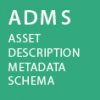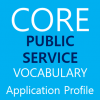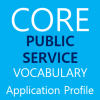Covered by:
| Recommendation 30 | Perceive data and information as a public asset that should be appropriately generated, collected, managed, shared, protected and preserved. Supporting Solutions |
| Recommendation 31 | Put in place an information management strategy at the highest possible level to avoid fragmentation and duplication. Management of metadata, master data and reference data should be prioritised. Supporting Solutions |
| Recommendation 32 | Support the establishment of sector-specific and cross-sectoral communities that aim to create open information specifications and encourage relevant communities to share their results on national and European platforms. Supporting Solutions |
Legal initiative |
Description |
Recommendations |
|
Short title: Open Data Directive Title: Directive 2019/1024 on open data and the re-use of public sector information (Recast) Status: In force and transposed |
The directive promotes the use of open data and lays down the legal framework for the reuse of public-sector information such as geographical, land registry, statistical or legal information held by public-sector bodies or public undertakings, and of publicly funded research data. Public-sector bodies and public undertakings must make their documents available in any pre-existing format or language and, where appropriate, by electronic means in formats that are open, machine readable, accessible, findable and reusable, complete with their metadata. | Recommendation 30 |
|
Short title: INSPIRE DIRECTIVE Status: In force and transposed |
The INSPIRE Directive lays down general rules setting up an infrastructure for spatial information in Europe for the purposes of European Union (EU) environmental policies and for policies or activities which may have an impact on the environment. The European infrastructure builds on that of spatial information that is established and operated by EU countries. |
Recommendation 31 Recommendation 32 |
|
Short title: General Data Protection Regulation (GDPR) Status: In force |
The General Data Protection Regulation (GDPR) allows European Union (EU) citizens to better control their personal data. It also modernises and unifies rules allowing businesses to reduce red tape and to benefit from greater consumer trust. The GDPR is part of the EU data protection reform package, along with the data protection directive for police and criminal justice authorities. |
Recommendation 30 |
|
Short title: Web accessibility directive Status: In force and transposed |
This Directve aims to make public sector websites and mobile applications more accessible, and to harmonise varying standards within the EU, reducing barriers for developers of accessibility-related products and services. This will allow EU citizens, particularly those with a disability, to gain better access to public services, an underlying principle of the EU’s Digital Agenda for Europe and eGovernment Action Plan 2016-2020. |
Recommendation 30 |
|
Short title and title: Commission Implementing Regulation (EU) 2015/1501 - eIDAS Regulation Status: In force |
This Regulation lays down technical and operational requirements of the interoperability framework in order to ensure the interoperability of the electronic identification schemes which Member States notify to the Commission. | Recommendation 30 |
|
Status: In force |
This regulation aims to improve checks at the EU’s external borders, allow for better detection of security threats and identity fraud, and help in preventing and combating illegal immigration. | Recommendation 30 |
|
Short title: Single Digital Gateway Regulation Status: In force |
The single digital gateway will facilitate online access to the information, key administrative procedures and assistance and problem-solving services that citizens and businesses may wish to contact if they encounter problems when exercising their internal market rights while living in or doing business in another EU country. |
Recommendation 30 |
|
Short title: eInvoicing Directive Status: In force and transposed |
E-invoicing by a business in one EU country for work done for or goods delivered to a public authority in another has been hampered by problems of a lack of interoperability, i.e. incompatible e-invoicing systems in different countries. The law applies to invoices falling within the scope of the public procurement directives (i.e. most contracts) but does not apply to contracts falling within the scope of Directive 2009/81/EC in the fields of defence and security, where the procurement and performance of the contract are declared to be secret or must be accompanied by special security measures. |
Recommendation 30 |
|
Short title: Regulation on Interoperability in the field of justice, freedom and security Status: In force |
It aims to to improve checks at the EU’s external borders, allow for better detection of security threats and identity fraud, and help in preventing and combating illegal immigration. | Recommendation 30 |
| Standards and Specifications | Relevant Recommendations | Corresponding Solutions |
|
Name: DCAT-AP Description: The DCAT Application Profile for data portals in Europe (DCAT-AP) is a specification based on the Data Catalogue Vocabulary (DCAT) developed by W3C. This application profile is a specification for metadata records to meet the specific application needs of data portals in Europe while providing semantic interoperability with other applications on the basis of reuse of established controlled vocabularies (e.g. EuroVoc) and mappings to existing metadata vocabularies. |
|
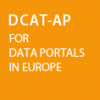
|
|
Name: ADMS-AP Description: The Asset Description Metadata Schema (ADMS) is a specification used to describe reusable solutions, such as data models and specifications, reference data and open source software. It was created with the help of a working group of experts. On 1 August 2013, W3C published ADMS as a W3C Working Group note. |
||
|
Name: Registry of Registers Description: The Registry of Registers is a solution dedicated to an application profile of DCAT-AP for base registries, namely, BRegDCAT-AP, aiming to provide a standard data model / specification for base registries access and interconnection. |
Recommendation 30 | |
|
Name: Core Public Service Vocabulary (CPSV) Description: The Core Public Service Vocabulary Application Profile is a data model that has been developed in the context of a Working Group for describing public services. The main focus of the CPSV-AP version 1.00 was the description of public services and business events on the Points of Single Contact which each Member State had to implement in the context of the Services Directive (2006/123/EC). |
Recommendation 31 | |
|
Name: Core Vocabularies Description: Core Vocabularies are simplified, reusable, and extensible data models that capture the fundamental characteristics of an entity, such as a person or a public organisation, in a context-neutral manner. |
Recommendation 31 | |
|
Name: ELI Ontology Description: The European Legislation Identifier (ELI) is a framework to make legislation metadata available online in a standardised format, so that it can be accessed, exchanged and reused across borders. For general information about ELI (governance, tools and news), and the implementation status of ELI by various stakeholders (in particular, the way ELI is implemented by the Office of Publications on Eur- Lex), please consult the ELI Register on Eur-Lex. |
Recommendation 32 | |
|
Name: Core Public Service Vocabulary (CPSV-AP) Description: The Core Public Service Vocabulary Application Profile is a data model that has been developed in the context of a Working Group for describing public services. |
Recommendation 31 |
| Solution | Description | Associated Recommendations |
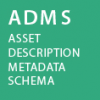
|
The Asset Description Metadata Schema (ADMS) is a specification used to describe reusable solutions, such as data models and specifications, reference data and open source software. It was created with the help of a working group of experts. On 1 August 2013, W3C published ADMS as a W3C Working Group note. | |
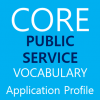
|
The Core Public Service Vocabulary Application Profile is a data model that has been developed in the context of a Working Group for describing public services. The main focus of the CPSV-AP version 1.00 was the description of public services and business events on the Points of Single Contact which each Member State had to implement in the context of the Services Directive (2006/123/EC). |
Recommendation 31 |

|
Big data test infrastructure (BDTI) helps public administrations improve the experience of the citizen, make government more efficient and boost business and the wider economy through big data. Big data is high-volume, high-velocity and high-variety information that requires new forms of processing to enable enhanced decision-making, insight discovery and process optimisation. | |

|
CIRCABC (Communication and Information Resource Centre for Administrations, Businesses and Citizens) is an open-source, web-based application which enables geographically spread collaborative groups to share information and resources in private workspaces. | Recommendation 30 |

|
CEF Context Broker is an API that can integrate data from multiple systems, creating a holistic view of information. By providing the layer that describes each type of data, the Context Broker makes it possible to create an interface that makes it easy for anyone to view and interpret big data. Using the Context Broker, organisations can monitor their metrics in real time through live updates. You can share the context information you choose with third parties, enabling process improvements and innovation across the whole data value chain. |
|

|
Core Vocabularies are simplified, reusable, and extensible data models that capture the fundamental characteristics of an entity, such as a person or a public organisation, in a context-neutral manner. | Recommendation 30 |

|
The use of CISE specifications and data models, helps to ensure that public administrations are taking into account relevant EU recommendations on standards and specifications in the maritime domain and are seeking to make the approach consistent across borders. | |
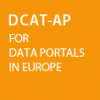
|
The DCAT Application Profile for data portals in Europe (DCAT-AP) is a specification based on the Data Catalogue Vocabulary (DCAT) developed by W3C. This application profile is a specification for metadata records to meet the specific application needs of data portals in Europe while providing semantic interoperability with other applications on the basis of reuse of established controlled vocabularies (e.g. EuroVoc) and mappings to existing metadata vocabularies | |

|
eArchiving provides the core specifications, software, training and knowledge to help data creators, software developers and digital archives tackle the challenge of short, medium and long-term data management and reuse in a sustainable, authentic, cost-efficient, manageable and interoperable way. eArchiving technical specifications are ideal for migrating long-term valuable data between generations of information systems, transferring data to dedicated long-term repositories (i.e. digital archives), or preserving and reusing data over extended (and shorter) periods of time and generations of software systems. |
|

|
e-Certis is a free online tool mapping documents requested in public procurement procedures across borders. The system identifies and links certificates necessary as proof of compliance with tender criteria in various areas of administrative verification (e.g. tax, social security obligations, criminal records, etc.). This helps bring clarity to the cross-border bidding process. Information provided by e-Certis is inserted by National public entities in charge and regularly updated. The e-Certis service is linked with the European Single Procurement Document (ESPD), which is a single self-declaration form of a bidder's eligibility in public procurement. e-Certis and the ESPD significantly reduce the effort needed for submission of a tender offer and facilitate bidding across borders. |
|

|
The eDelivery Building Block helps public administrations to exchange data and documents via AS4 Access Points, based on the AS4 messaging protocol. This allows different parties to exchange electronic data and documents across sectors and borders through a secure eDelivery message exchange network. By connecting to an AS4 Access Point, a public administration can exchange electronic data and documents with any organisation connected to another Access Point in the network. The eDelivery Building Block also helps upgrade exisiting solutions so they can connect to eDelivery messaging networks through an Access Point. | |

|
The eID Building Block allows public administrations and private service providers to easily extend the use of their online services to citizens from other Member States, in line with the eIDAS Regulation. | |

|
The CEF eInvoicing Building Block aims to promote the successful uptake of electronic invoicing in Europe, respecting the European standard on electronic invoicing and Directive 2014/55/EU on electronic invoicing in public procurement. This is relevant for both public and private entities established in the EU, as well as in participating EEA countries. |
Recommendation 32 |

|
The European Legislation Identifier (ELI) is a framework to make legislation metadata available online in a standardised format, so that it can be accessed, exchanged and reused across borders. For general information about ELI (governance, tools and news), and the implementation status of ELI by various stakeholders (in particular, the way ELI is implemented by the Office of Publications on Eur- Lex), please consult the ELI Register on Eur-Lex. | Recommendation 32 |

|
The CEF eSignature Building Block allows public administrations, businesses, and citizens to electronically sign any document, anywhere in Europe, at any time, in line with the eIDAS Regulation for e-signatures, e-seals and related services offered by Trust Service Providers. | Recommendation 32 |

|
The CEF eTranslation Building Block is a machine translation tool that helps public administrations and businesses exchange information and documents across all official EU languages, Icelandic and Norwegian. Public administrations, citizens and businesses in the EU will thus be able to benefit from digital services in the language of their choice. |
Recommendation 32 |
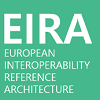
|
The European Interoperability Reference Architecture (EIRA©) is an architecture content metamodel defining the most salient architectural building blocks (ABBs) needed to build interoperable e-Government systems. The EIRA© provides a common terminology that can be used by people working for public administrations in various architecture and system development tasks. The EIRA© was created and is being maintained in the context of Action 2016.32 of the ISA² Programme. The EIRA uses (and extends) the ArchiMate language as a modelling notation and uses service orientation as an architectural style. | |
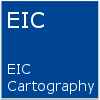
|
The European Interoperability Cartography (EIC), as defined by the Decision (EU) 2015/2240 is a “repository of interoperability solutions for European public administrations provided by Union institutions and Member States, presented in a common format and complying with specific re-usability and interoperability criteria that can be represented on the EIRA”. The Decision (EU) 2015/2240 further states that “interoperability solutions and updates shall, where appropriate, be included in the EIC and be made available for re-use by European public administrations”. | Recommendation 31 |

Location Framework Blueprint
|
The European Union Location Framework (EULF) Blueprint is a framework of recommendations and related guidance for publishing and using location information and applying interoperability principles in digital government. The EULF Blueprint was initially developed through the EULF project in the ISA programme. The content has been updated extensively through the European Location Interoperability Solutions for e-Government (ELISE) project, which is part of the ISA2 programme. | |

|
EUSurvey, the new version of IPM, is a multilingual online survey management system built for the creation and publication of surveys and public consultations. It covers all steps of a survey life cycle, from the design to the launch of the survey to the analysis and publication of results. It offers different types of questions, from simple text and multiple-choice questions to spreadsheet questions or multi-media survey elements. Results can be displayed as histograms, percentages or in full detail and can be exported to different formats and published automatically on a dedicated webpage within the application. It is widely accessible and provides support for either identification or anonymity, depending on survey requirements. |
Recommendation 30 |
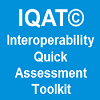
|
The toolkit is based on a specific conceptual model for the Interoperability assessment of software solutions, which relies on four interoperability areas: Interoperability (IOP) Governance, Software Architecture, Human-to-Machine Interfaces and Machine-to-Machine Interfaces.g data was applied when operating the solution. |
Recommendation 30 |

|
This public multilingual knowledge management infrastructure will support e-commerce solutions, such as machine translation, localisation and multilingual search, by creating interoperable multilingual classifications and terminologies that will be easily reusable by small and medium-sized enterprises (SMEs) and public administrations. SMEs are currently at a disadvantage compared to big companies due to the high cost of providing multilingual services. | Recommendation 30 |

|
The SERV project aims at creating the conditions for sharing statistical services and supporting their integration in statistical production processes at national, ESS and Commission level. It implements governance structure to enable sharing of services (e.g. service certification procedures), to choose at ESS level on how to make a service available, contributes to standardising the description of business needs by implementing the CSPA standard from UNECE ModernStats initiaitive. |
Recommendation 30 |

|
PMKI is a ISA2 pilot project aiming to:
|
Recommendation 30 |
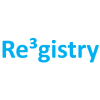
|
Re3gistry provides a central access point that allows labels and descriptions for reference codes to be easily looked up by humans, or retrieved by machines. It supports organisations in managing and updating reference codes in a consistent way, so that all versions of a code remain traceable and properly documented, and do not change or disappear over time. | Recommendation 30 |

|
Ref2Link automates the detection of references and generates hyperlinks based on dynamic and customisable rules. You can use Ref2Link as a standalone tool or as a building block in IT systems such as LEOS. Ref2Link supports out-of-the-box multilingual detection of EU legal instruments. It enforces the European Legislation Identifier and European Case Law Identifier standards and other references if needed. National public administrations may adapt the default detection rules to meet their own specific requirements. The code will be made available under the free European Union Public Licence (EUPL). |
Recommendation 32 |

|
The presented architecture is based on the analysis about the exchange of e-Documents in 16 selected Member States, available here. Please use this report as a supporting document for the presented reference architecture and as a source of detailed information about the solutions used in the analysed Member States. | |

|
The Registry of Registers is a solution dedicated to an application profile of DCAT-AP for base registries, namely, BRegDCAT-AP, aiming to provide a standard data model / specification for base registries access and interconnection. | Recommendation 30 |

|
The “ESS Enterprise Architecture Reference Framework”, abbreviated ESS EARF denotes a set of documents containing a number of key artefacts, which can be used at various stages in projects as well as in the overall governance of the realisation of Vision 2020. The ESS EARF is the result of the collective and iterative work of the DIME/ITDG Task Force on ESS EA which ran from April 2014 till August 2015. | Recommendation 30 |
|
IMAPS solution v1.2 |
IMAPS is a user-friendly online questionnaire, designed as a self-assessment tool to assist public service owners to evaluate key interoperability aspects of their digital public service. Not only can IMAPS be used to assess the interoperability of any public service – from open data portals, and e-voting platforms, to public procurement services, and much more – it is applicable to services at all levels of government (international, national, regional and local). |
Recommendation 30 |
|
SIMAPS solution v1.0.0 |
This is v1.0.0 of the Semantic Interoperability Maturity Assessment of a Public Service (SIMAPS) survey. This version of the SIMAPS survey has been released on the 02 July 2020 on Joinup. It is a user-friendly online questionnaire, designed as a self-assessment tool to assist public service owners to evaluate key semantic interoperability aspects of their digital public service. The current version of SIMAPS (SIMAPS v1.0.0) is available at the EU survey portal: https://ec.europa.eu/eusurvey/runner/SIMAPS_v_1_0_0 The release is composed of the following elements:
|
|
|
VocBench provides a solution to centralise the management of controlled vocabularies and metadata used by your public administration to support interoperability. Type of solution: Semantic asset |
||
|
OpenPM² |
PM² is a Project Management Methodology developed and supported by the European Commission. Its purpose is to enable project teams to manage their projects effectively and deliver solutions and benefits to their organisations and stakeholders. PM² is a light and easy to implement methodology suitable for any type of project. PM² has been custom developed to fit the specific needs, culture and constraints of EU Institutions, but also incorporates elements from globally accepted best practices, standards and methodologies. | Recommendation 30 |


